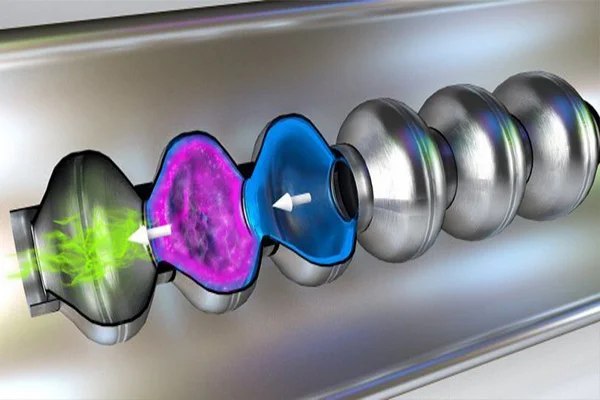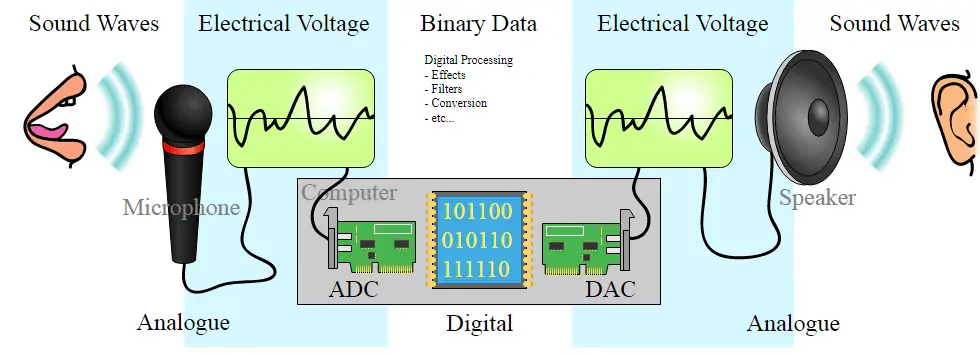What is Digital Image Processing
- Home
- Blog Details

- November 8 2019
- admin
Previously we have learned what visual inspection is and how it helps in inspection checks and quality assurance of manufactured products. The task of vision-based inspection implements a specific technological aspect with the name of Digital Image Processing. Before getting into what it is, we need to understand the essential term Image Processing.
Image processing is a technique to carry out a particular set of actions on an image to obtain an enhanced image or extract some valuable information.
It is a sort of signal processing where the input is an image, and the output may be an improved image or characteristics/features associated with the same. The inputs to this process are either a photograph or video screenshot and these images are received as two-dimensional signals.
Image processing involves three steps:
Image acquisition: Acquisition can be made via image capturing tools like an optical scanner or with digital photos.
Image enhancement: Once the image is acquired, it must be processed. Image enhancement includes cropping, enhancing, restoring, and removing glare or other elements. For example, image enhancement reduces signal distortion and clarifies fuzzy or poor-quality images.
Image extraction: Extraction involves extracting individual image components, thus, producing a result where the output can be an altered image. The process is necessary when an image has a specific shape and requires a description or representation. The image is partitioned into separate areas and labeled with relevant information. It can also create a report based on the image analysis.
Basic principles of image processing begin with the observation that electromagnetic waves are oriented in a horizontal plane. A single light pixel can be converted into a single image by combining those pixels. These pixels represent different regions of the image. This information helps the computer detect objects and determine the appropriate resolution. Some of the applications of image processing include video processing. Because videos are composed of a sequence of separate images, motion detection is a vital video processing component.
Image processing is essential in many fields, from photography to satellite photographs. This technology improves subjective image quality and aims to make subsequent image recognition and analysis easier. Depending on the application, image processing can change image resolutions and aspect ratios and remove artifacts from a picture. Over the years, image processing has become one of the most rapidly growing technologies within engineering and even the computer science sector.
Types of Image Processing
Image processing includes the two types of methods:
Analogue Image Processing: Generally, analogue image processing is used for hard copies like photographs and printouts. Image analysts use various facets of interpretation while using these visual techniques.
Digital image processing: Digital image processing methods help in manipulating and analyzing digital images. In addition to improving and encoding images, digital image processing allows users to extract useful information and save them in various formats. This article primarily discusses digital image processing techniques and various phases.

Digital Image Processing and how it operates
Digital image processing requires computers to convert images into digital form using the digital conversion method and then process it. It is about subjecting various numerical depictions of images to a series of operations to obtain the desired result. This may include image compression, digital enhancement, or automated classification of targets. Digital images are comprised of pixels, which have discrete numeric representations of intensity. They are fed into the image processing system using spatial coordinates. They must be stored in a format compatible with digital computers to use digital images. The primary advantages of Digital Image Processing methods lie in their versatility, repeatability, and the preservation of original data.
Unlike traditional analog cameras, digital cameras do not have pixels in the same color. The computer can recognize the differences between the colors by looking at their hue, saturation, and brightness. It then processes that data using a process called grayscaling. In a nutshell, grayscaling turn RGB pixels into one value. As a result, the amount of data in a pixel decreases, and the image becomes more compressed and easier to view.
Cost targets often limit the technology that is used to process digital images. Thus, engineers must develop excellent and efficient algorithms while minimizing the number of resources consumed. While all digital image processing applications begin with illumination, it is crucial to understand that if the lighting is poor, the software will not be able to recover the lost information. That’s why it is best to use a professional for these applications. A good assembly language programmer should be able to handle high-performance digital image processing applications.
Images are captured in a two-dimensional space, so a digital image processing system will be able to analyze that data. The system will then analyze it using different algorithms to generate output images. There are four basic steps in digital image processing. The first step is image acquisition, and the second step is enhancing and restoring the image. The final step is to transform the image into a color image. Once this process is complete, the image will be converted into a digital file.
Thresholding is a widely-used image segmentation process. This method is often used to segment an image into a foreground and an object. To do this, a threshold value is computed above or below the pixels of the object. The threshold value is usually fixed, but in many cases, it can be best computed from the image statistics and neighbourhood operations. Thresholding produces a binary image that represents black and white only, with no shades of Gray in between.
Digital image processing involves different methods, which are as follows:
Image Editing: It means changing/altering digital images using graphic software tools.
Image Restoration: It means processing a corrupt image and taking out a clean original image to regain the lost information.
Independent Component Analysis: It separates various signals computationally into additive subcomponents.
Anisotropic Diffusion: This method reduces image noise without having to remove essential portions of the image.
Linear Filtering: Another digital image processing method is about processing time-varying input signals and generating output signals.
Neural Networks: Neural networks are the computational models used in machine learning for solving various tasks.
Pixelation: It is a method for turning printed images into digitized ones. Principal Components.
Analysis: It is a digital image processing technique used for feature extraction.
Partial Differential Equations: This method refers to dealing with de-noising.
Hidden Markov Models: This technique is used for image analysis in 2D (two-dimensional).
Wavelets: Wavelets are the mathematical functions used in image compression.
Self-organizing Maps: a digital image processing technique classifies images into several classes.
Uses of Digital Image Processing
Digital image processing is commonly used in advertising, marketing, design, photography, and other industries. There are many common applications of digital image processing in the medical field, including X-Ray imaging, PET scans, and UV imaging. In space, remote sensing involves scanning the earth with satellites and acknowledging all activities in space. Machine vision, or robot vision, uses software and is another application of digital image processing. The process of digital image processing is very time-consuming but can result in a higher quality of life for humans.
One of the most common applications of image processing is identifying diseased plants. Traditionally, this task would involve consulting an expert. Luckily, image processing technology can save the day in this situation. The process begins with the preprocessing of digital media, which improves resolution, noise, and color. Once the image is enhanced, it will be segmented and referred to related images in a database. The processor then compares the segmented image with a reference image to determine if it contains defects.
Image recognition technology has grown to be of great potential for wide adoption in various industries. This technology has seen significant usage with each passing year, as enterprises have become more time-efficient and productive due to better manufacturing, inspection, and quality assurance tools and processes. Big corporations and start-ups such as Tesla, Google, Uber, Adobe Systems, etc., heavily use image processing techniques in their day-to-day operations. With the advancements in AI (Artificial Intelligence), this technology will see significant upgrades in the coming years.
Do you wish to process some image?
Prescient Technologies can help you with your image processing and visual inspection requirements. Have a look at our expertise or get in touch with us today.

